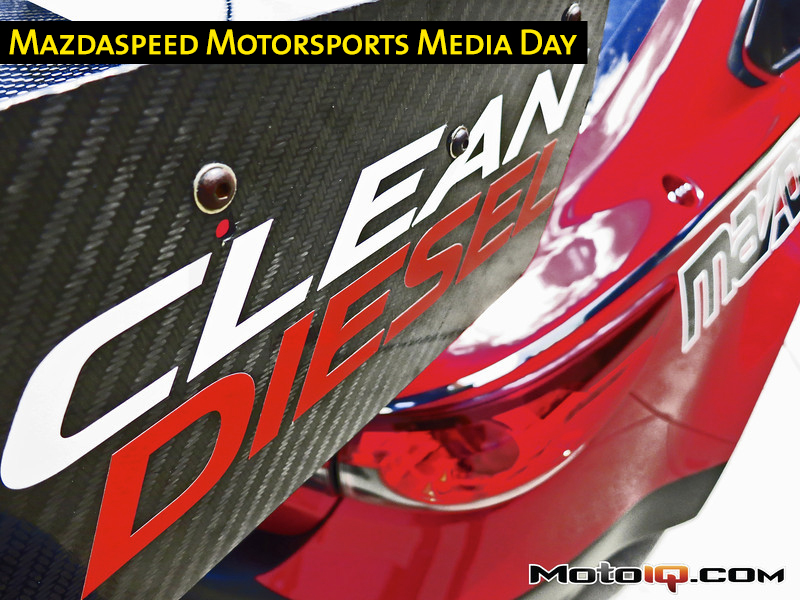,
 |
 |
Now onto the SKYACTIV-D race engine. Sylvain Tremblay and his engineer presented many pretty pictures of detailed FEA and CFD analysis, but I probably can't show those. So you'll just have to go along with what I say. This was quite an ambitious project as the race engine is based on the production engine where the stock block and unported cylinder head had to be retained. SpeedSource worked closely with Mazda on the entire project and Mazda provided SpeedSource with the very first few engines off the production line. Aside from the purpose built diesel engines in the Prototype class Audis and Peugeots, no one has really raced a diesel powered car at this level. As a result there was basically no aftermarket support for the engine. This required SpeedSource to do much of the development themselves.
Well, SpeedSource had the assistance of Mazda and ANSYS in making the SKYACTIV-D race engine come together at the extremely fast pace required to make the first race. This engine is the first fully CAD designed racing engine by SpeedSource and Mazda. Bosch stepped in to help with the diesel fuel injection side of the equation. Extensive stress analysis using ANSYS was performed on many of the components with the upper engine block, lower engine cradle, cylinder head, and front timing cover being deemed strong enough for motorsports use straight off the assembly line. The engine cradle was exceptionally strong and only aftermarket main cap fasteners were required. CFD analysis of the stock cylinder head showed it had ample flow capacity for the targeted power levels of well over double the stock power rating. After much analysis, the bulk of the race engine development effort went into the crankshaft, connecting rods, and pistons.
 | ||
| On the left is the stock crank while the Motorsports crank is on the right. |
A significant challenge when racing a diesel is the large amounts of torque forced through the pistons, rods, and crank during a power stroke. Diesels typically generate far greater cylinder pressures and forces on the components requiring them to be much beefier than their gasoline counterparts. In designing the new crank, transient structural and harmonic response simulations were used to evaluate the iterations of designs. The final product produced by Pankl is a stronger and stiffer crank with reduced inertia, while still retaining the same mass as the stock crank per the rules.
 |
| The stock rod is on the left, the intermediate iteration in the middle, and final iteration of the Motorsports rod on top. |
As nearly every OEM is doing, Mazda optimized the connecting rod to be as light as possible for the rated power of the engine in an effort to improve fuel efficiency and reduce emissions. Of course, this means the rod will likely fail when pushing it down with more than double the stock torque. The shape of the Motorsports rod makes it much stiffer than the stock rod while also reducing stress in the rod by 39%. On the pin bore side of the rod, it was found that the piston was pushing down so hard on the pin that the bushing material was getting transferred onto the pin due to contact. The final rod design eliminates the bushing in the pin bore and simply makes due with a micro polish of the bore along with DLC coating on the pin.



